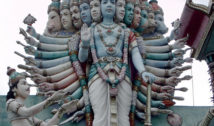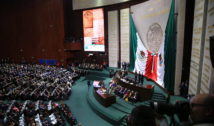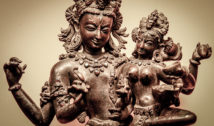
AI Experiment Creates New Religion Based on Sacred Texts
- By Gary Nguyen --
- 13 Dec 2017 --
![By Argonne National Laboratory's Flickr page [CC BY-SA 2.0], via Wikimedia Commons](http://www.worldreligionnews.com/wp-content/uploads/2017/12/1024px-IBM_Blue_Gene_P_supercomputer.jpg)
The result was incomprehensible
The number of religions on planet earth stacks up to a mind-boggling 10,000 distinct varieties.[/tweetit] Modern philosophers have long wondered what would happen if all the religions were blended together to form a single inclusive belief. Now after a long time, this question can be answered, albeit not in a serious manner though.
AI Experiment Creates New Religion Based on Sacred Texts[/tweetthis]
The project was discussed in an episode of the Flash Forward podcast.
The blending of disparate religions was done by Janelle Shane, a research scientist, and the results are now published for all to ponder over.
Shane teamed up with Rose Eveleth, a producer, writer, and designer working out of Brooklyn. Joining the two in their quest was her neural network. The two and the Artificial Intelligence (AI), consulted a total of 38 sources. Most notable among them included Tanakh, Celtic Dragon Myth, Vedas, King James Bible, Tanakh, Book of Mormon, Buckland's Complete Book of Witchcraft and the Quran.
Shane and Eveleth collaborated to train a specific machine. The base of learning will be the assembled religious texts. The particulars of machine learning algorithm and texts come with a number of notes and caveats. For Shane, this is not the first time she had used an algorithm for obscure uses.
The machine learning project has about a thousand caveats. One prominent among them is the source texts set compilation to train this particular algorithm. It is to be kept in mind that this is not a complete sampling of the mentioned religious texts. The compilation has no scientific basis. Both Shane and Eveleth do not consider themselves religious experts. No effort was made to balance source texts on the basis of the popularity of different religions. In fact, no efforts went to balance any factor whatsoever. The used sample is extremely biased depending on the material texts commonly found online. The instantly usable texts form a majority. A few texts have been discarded as the versions were not inclusive of English sections. This is important as the concerned machine learning algorithm would not function well if there were random bits of foreign languages like Mandarin or French. A large number of footnotes were also excluded from the math.
Since this is the first time doing this experiment, Shane and Eveleth simulated the blend on a modest scale using the sole computing power of her laptop. She used the neural network to complete the process. The objective was to see what the final will be. The end product was gibberish and not comprehensible.


















